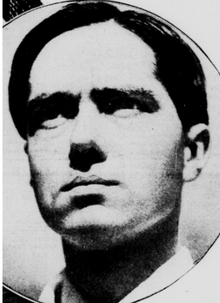|
Robert E. Cornish
Robert E. Cornish (December 21, 1903 – March 6, 1963) was an American biologist and writer, best known for his resuscitation experiments. BiographyCornish was a child prodigy graduating from the University of California, Berkeley with honors at the age of 18 and receiving a doctorate by the time he was 22. He worked on various projects including one that allowed for reading newspapers under water with special lenses. In 1932 he became interested in the idea that he could restore life to the dead. The cornerstone of his plan consisted of a teeterboard or see-saw that was used to get the blood flowing in the recently deceased patients while a mixture of epinephrine (adrenaline) and anticoagulants was injected into their circulatory system. In 1933 he attempted to revive victims of heart attack, drowning, and electrocution with the teeter board, but had no success. Cornish decided to perfect his method on animals and managed to revive two dogs (Lazarus IV and V) clinically put to death on May 22, 1934, and in 1935. As his experiments were successful on his dogs, Cornish wished to expand his clinical trials to include human testing. San Quentin Death-row inmate[1] Thomas McMonigle[2] contacted Cornish, offering his body for possible reanimation following his execution.[3] California law enforcement refused Cornish and McMonigle's petition, due to concerns a reanimated murderer would have to be freed under the "double jeopardy" clause.[4] After denial of the petition, McMonigle was executed in San Quentin's gas chamber on 20 February 1948.[5] Selected publications
In popular media
References
External links |
||||||||||
